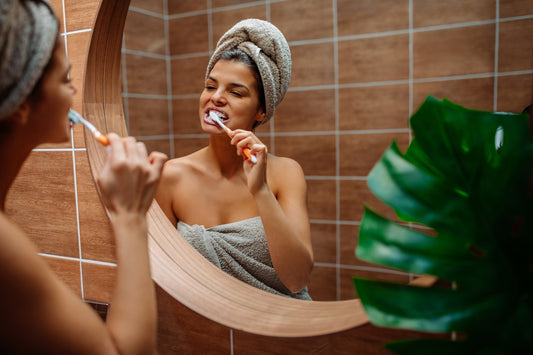SIBO is a condition in which bacteria normally found in the colon proliferates in large numbers in the small intestine.1 Signs and symptoms may vary due to the type of bacterial overgrowth2 and the severity of disease.3 Typical symptoms tend to overlap with those of IBS, and include bloating, abdominal pain, flatulence, diarrhoea and/or constipation, weight loss, malabsorption, malnutrition and osteoporosis.1,2 Several conditions are also linked with SIBO such as rosacea, hypothyroid, lactose intolerance, coeliac disease, inflammatory bowel disease, chronic fatigue syndrome and fibromyalgia to name a few.
How to fix it
The 5R gut restoration protocol, implemented in the correct sequence, can be effective in managing SIBO:
Remove
Simple sugars and well-absorbed carbohydrates (such as grains, legumes, starchy vegetables) should be eliminated, as they feed the bacteria creating symptoms and fuel more bacterial growth. Reduction of any drugs that reduce intestinal motility or stomach acidity to its lowest possible level is also advised1. Conventionally, antibiotics are used to eradicate SIBO4 but due to potential adverse effects,8 specific strain probiotics (such as Lactobacillus casei and L. acidophilus) can be used as an alternative therapy.8,9
Replace
Insufficient stomach acid, bile and digestive enzymes may be a key factor in SIBO,4 and replacing these through supplementation may be required to decrease ingested bacterial load. Any nutritional deficiencies as a consequence of SIBO (particularly vitamins A, D, E, K and B12, calcium and magnesium)2 will need to be corrected.
Re-inoculate
As a second stage process, once SIBO has been removed, multi-strain probiotics are used to re- establish a healthy gut microflora balance.10
Repair
SIBO can cause inflammation and damage the lining of the small intestine.2 As part of the second stage, gut healing nutrients such as L-glutamine,11 essential fatty acids, zinc and quercetin;12,13 and anti-inflammatory agents such as curcumin and resveratrol14 can be used to repair the gut.
Rebalance
Stress has a negative effect on gut motility, intestinal permeability, gut barrier regeneration, gut flora balance and the immune system.15 Stress management is therefore important in maintaining gut health. In addition, spacing meals 4-5 hours apart will allow the small intestine to clear away bacteria at night and in between meals.16
What causes it?
There are several natural defenses that prevent bacterial overgrowth in the small intestine. Stomach acid, bile and pancreatic juices destroy or limit bacterial growth. Muscular activity of the small intestine work to propel not only food, but also bacteria away and out into the colon. The intestinal mucus layer and the immune system also aid in preventing bacterial proliferation. SIBO can develop if some of these defence mechanisms are disrupted.4
Who's at risk?
Though the following factors do not necessarily lead to SIBO, there is evidence that they lead to an increased risk of developing it:
- Chronic antacid use7
- Recurrent antibiotic use2
- Use of narcotics1
- The elderly2
- Gastrointestinal surgery1
- Those with constipation, IBS, diabetes, coeliac disease, low stomach acid, scleroderma, intestinal diverticulosis, and intestinal obstructions caused by strictures, adhesions and cancer.1,2
Diagnosing SIBO
The most efficient and non-invasive method for testing for SIBO is through a glucose and hydrogen breath test.6








